Calf slaughterhouse
Transport and unload
Transport

Transportation of the calves themselves is subject to tight regulations. These stipulate how many calves are allowed per truck, for instance, as well as how much room they must have above their heads and the driver’s driving style – careful driving helps to limit their stress levels.
A recent development is ‘comfort class’ transport for calves. These special trucks are fitted with climate-controlled compartments to maintain a constant temperature inside at all times.
Unload

Holding pen

At the slaughterhouse, the calves are led into a holding pen. Transportation is carefully scheduled to minimise waiting times. A vet checks all calves upon arrival. A slaughterhouse employee, the so-called receiver, counts the animals and checks that all the required documentation is present. This can include the certificate of quality assurance from the veal association, Stichting Kwaliteitsgarantie Vleeskalversector (SKV). Inspectors from this independent body keep tabs on the entire production process. The SKV only issues a quality certificate when it has firmly established that no illegal growth hormones or other illegal substances and/or medicines have been used.
Calves unloading
Knocking box
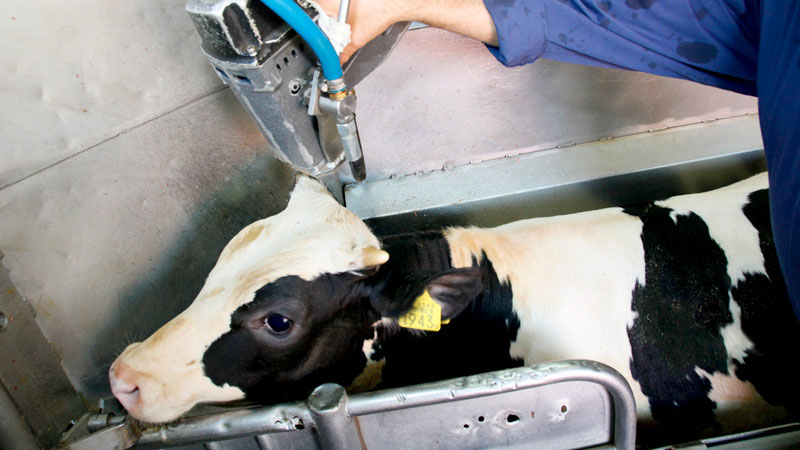
Before being slaughtered, the calves are first stunned using a cattle gun. Only when the animals are unconscious does the slaughtering process continue.
Skinning
Clean blades

Hygiene is of the utmost importance throughout the entire slaughtering process. The blades used for skinning, for example, have to be 100% clean. That’s why a container of boiling hot water is located at each station along the slaughtering line in order to disinfect the blades after each cutting action. This prevents potential bruising.
The hygiene procedures are specified in the food safety handbooks. Independent bodies such as the Netherlands Food and Consumer Product Safety Authority (VWA) regularly check that all rules and regulations are being followed.
Skinning

An employee carefully removes the skin from the carcass. Once that is done, other staff remove the intestines. This is very precise work. Each member of staff carries out a particular task until only the carcass remains. This is then examined by an inspector from the independent and accredited inspection body, Kwaliteitskeuring Dierlijke Sector (KDS), which works on behalf of the Netherlands Food and Consumer Product Safety Authority (VWA).
Intestines
Control
KDS
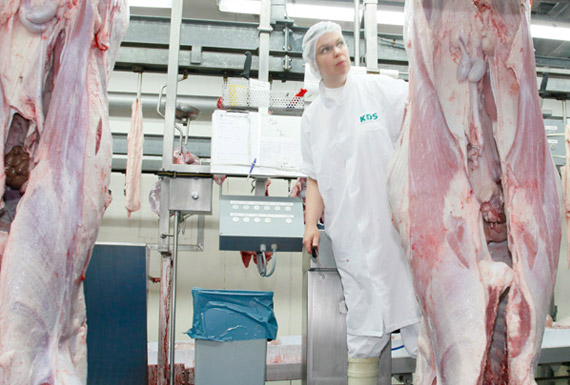
Inspectors from the Kwaliteitskeuring Dierlijke Sector (KDS) inspection body check each carcass including the organs belonging to it.They are on the lookout for any defects, and check whether it is clean and that there is no bruising.
The KDS has the power to fully or partially reject a carcass. In this case, the meat will not enter the human food chain but will instead be sent to a processing plant to be destroyed. The focus is always firmly on guaranteeing food safety.
Liver
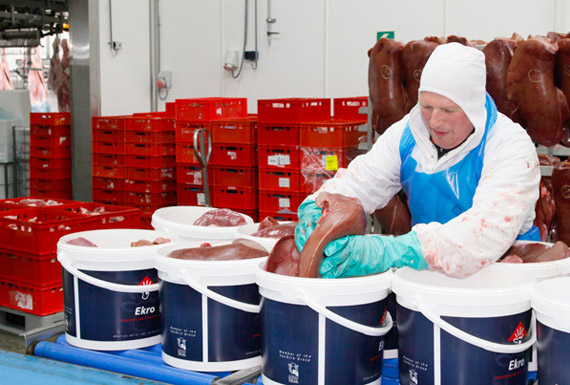
One of the calf’s edible organs is the liver. Once the liver has been removed from the carcass, it is kept in cold storage. The livers are transported either in plastic containers or vacuum-packed to customers at home and abroad.
Classification

Classification means allocating the carcasses to a particular group or ‘class’ based on their quality. This is done by the office known as the Centraal Bureau Slachtveediensten. This organisation’s employees weigh all carcasses, with the kidneys being weighed separately.
They also assess the colour of the meat and the percentages of both meat and fat. The information is entered into a database and is also contained on a chip that is linked to the meat hook which the carcass hangs from. In the photo, an employee is digitally recording the meat’s colour. This system ensures that the assessment is carried out objectively, leaving no room for discussion.
EU health mark
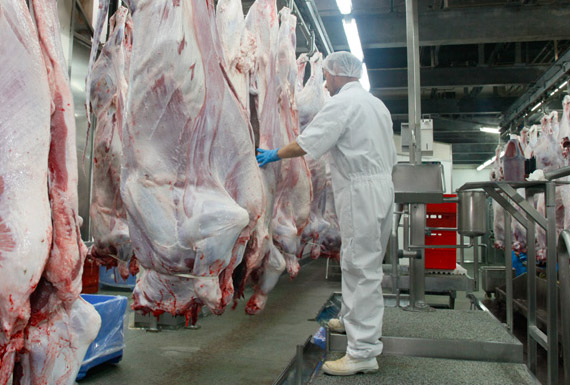
When a carcass has been approved, a slaughterhouse employee marks it with an EU health symbol. This proves that the meat is safe for human consumption.
In order to be allowed to use EU health marks, slaughterhouses first have to demonstrate that they comply with all the strict European regulations and procedures.
The marks are made at prescribed places on the carcass, such as on the shoulder, the back and the rump. Needless to say, food-safe ink is used.
Kidneys
After classification, a slaughterhouse employee removes the kidneys from the carcass. They are placed in a separate container and then kept in cold storage until they are ready to be packed.
Sometimes the kidneys are removed from the carcass with the layer of white fat still on them since this is a very popular delicacy in French cuisine.
Next steps
Holders

The various types of carcasses are hung in the storage area, known as the holders. Only when the Centraal Bureau Slachtveediensten office has finished the classification process do the slaughterhouses know the quality of their carcasses. In the holders, the carcasses are grouped according to quality class, making it easier to supply customers precisely the quality of meat they require. Some customers may want a very heavy, dark carcass whereas others will prefer light, pale meat, or perhaps something in between.
Rinsing

Before entering cold storage, the carcasses are first rinsed clean. At this stage of the slaughtering process, hygiene is once again of the utmost importance. Only completely clean carcasses are hung in the cold store. The meat has to be cooled as quickly as possible in the interests of food safety.
Label

All the available information about a calf is stored in a chip attached to the meat hook. The information is also printed out onto a label which hangs from the carcass. The label shows the country of birth and where the calf was raised, for example. The label also shows a unique ear number that enables that particular calf to be traced throughout its entire lifetime.
From its date of birth, the feed it has received and its classification to which day the SKV awarded its quality certificate, all the data is carefully recorded in order to be able to identify – at any time – exactly what has happened to that calf and when. This system offers extra reassurance to consumers that the veal they purchase is safe and reliable.

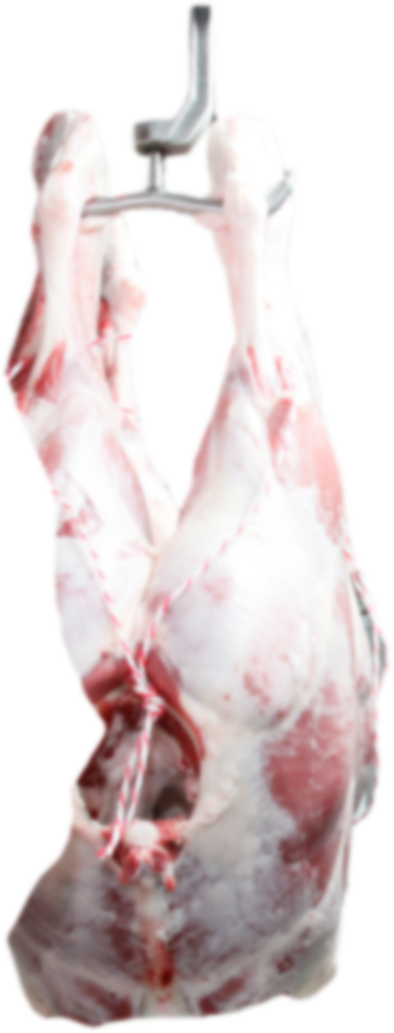
This is the end of the tour slaughterhouse. Choose another link in the chain or use the red arrow on the right to navigate back to the floor plan.